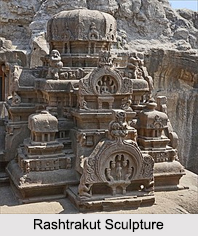 Village was the smallest administrative unit in the Rashtrakuta Empire. The areas that were directly administered were divided into Rashtras and Vishayas. The number of villages comprised in a Vishaya ranged from 1,000 in small states to 4000 in bigger states. The Vishayas were again subdivided into Bhuktis that consisted of fifty to seventy villages and named after the headquarter towns. The Bhuktis were further divided into smaller groups of ten to twenty villages each.
Village was the smallest administrative unit in the Rashtrakuta Empire. The areas that were directly administered were divided into Rashtras and Vishayas. The number of villages comprised in a Vishaya ranged from 1,000 in small states to 4000 in bigger states. The Vishayas were again subdivided into Bhuktis that consisted of fifty to seventy villages and named after the headquarter towns. The Bhuktis were further divided into smaller groups of ten to twenty villages each.
The Rashtrapati was at the head of the administration of the Rashtra. He looked after military and the civil administration. He had to maintain peace and order as well as keep a watchful eye on smaller feudatories and officers. The Rashtrapati had a sufficient military force under his command. He used to enjoy the status and titles of a vassal.
The Rashtrapatis were in charge of the fiscal administration and were responsible for collection of the land revenue. They had to keep record of local rights and privileges and to note the villages whose revenues had been granted to temples and Brahmanas.
The village administration was carried on by the village headman and the village accountant. These were hereditary posts. The headman preserved law and order in the village and had a local militia at his disposal to assist him in carrying out his duties. The peace of the villages was disturbed mostly by the rebellions of feudatories and the rivalries of adjacent villages. In such cases headmen had to discharge the duties of military captains and if required had often to lay down their lives, while defending the fellow villagers. They collected village revenues and ensured its their payment to the royal treasury and granaries. Remuneration was done by giving away rent-free lands and assignment of some petty taxes that were paid in kind. They were assisted in their work by the village accountants.
The popular voice influenced the village administration and it was effective. Each village had a popular council on which every adult householder was represented. There were no formal elections held. However in some elections were held. The elders of the villages informally appointed sub-committees to manage local schools, tanks, temples and roads. They would receive trust properties and administer them according to the conditions laid down by those who donated it. These sub-committees cooperated with the village headman and received a fair share of the village revenue for financing the various public welfare schemes. Civil suits were decided by the village council and they were enforced by the government.



















